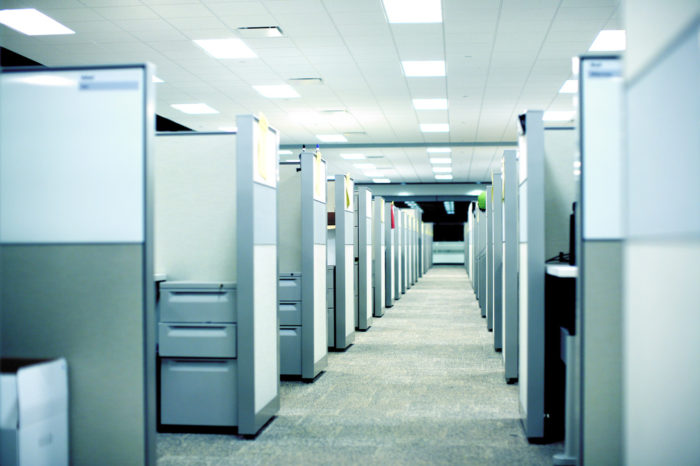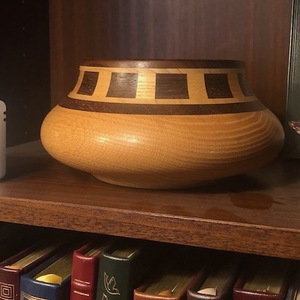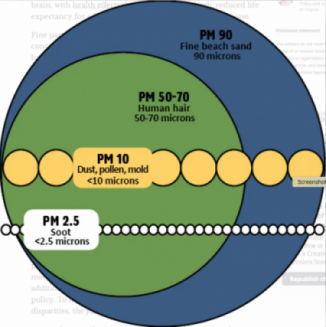
Image Credit: Mark Sebastian via Flickr
Breathing in the stale air found in conventional office buildings makes it harder to think, a new report suggests.
Researchers conducting a double-blind study found that stuffy office air reduced the cognitive function of 24 professional workers by half, Ars Technica said. The study was published in Environmental Health Perspectives by the National Institute of Environmental Health Science.
Lead researcher Joseph Allen, director of the Healthy Buildings program at Harvard, said the results were “striking.” Although researchers knew that air quality was likely to affect cognitive function and work performance, Allen didn’t expect high air quality could double cognitive scores.
The study took two weeks. Participants spent Tuesday, Wednesday, and Thursday working in what looked like a normal office environment, Ars said, but was actually an indoor air quality lab at Syracuse University. While the lab has earned a LEED Platinum rating, it’s still able to manipulate levels of carbon dioxide and volatile organic compounds in the air.
Researchers adjusted CO2 and VOC levels to meet several scenarios, including a conventional office with high VOC concentrations, and a “green” environment with low VOC concentrations. Additional simulated conditions included a green building with a high outdoor ventilation rate (called “Green +”), and one with artificially elevated carbon dioxide levels.
A double-blind study
Participants took a test every day at 3 p.m. They didn’t know what kind of air they had been breathing all day. Neither did the technicians who administered the test.
The test was designed to measure mental function in nine different “domains,” including strategy, crisis response, and how information was used.
“Cognitive function scores were significantly better in Green + building conditions compared to the Conventional building conditions for all nine functional domains,” the report says. “These findings have wide-ranging implications because this study was designed to reflect conditions that are commonly encountered every day in many indoor environments.”
Beginning in the 1970s, the report notes, buildings became increasingly tighter as energy prices rose. Typical air exchange rates in homes and offices dropped.
“With these design changes comes the potential for negative consequences to indoor environmental quality (IEQ), as decreased ventilation can lead to increased concentration of indoor pollutants,” the study says.
The report says that carbon dioxide (CO2) concentrations in indoor air have long been an indicator of how effective ventilation is; CO2 levels are used as a “proxy for indoor air quality.” But evidence is now mounting that CO2 is a direct pollutant, not just a marker for other pollutants.
“We found statistically significant declines in cognitive function scores when CO2 concentrations were increased to levels that are common in indoor spaces (approximately 950 ppm),” the report says. “In fact, this level of CO2 is considered acceptable because it would satisfy ASHRAE’s ventilation rate guidance for acceptable indoor air quality. Larger differences were seen when CO2 was raised to 1400 ppm.”
Researchers said that exposure levels used in the test reflected office conditions in which many people work every day. They suggested more should be done to investigate exposure levels in homes, schools, and airplanes where reductions in cognitive function and decision-making “could have significant impacts on productivity, learning, and safety.”
Weekly Newsletter
Get building science and energy efficiency advice, plus special offers, in your inbox.















5 Comments
ASHRAE
Have Building Science Corp. revised their position that ventilation rates should be lowered?
Response to Malcolm Taylor
Malcolm,
I haven't heard any response to this study's findings from Joe Lstiburek or anyone else at the Building Science Corporation.
This is a single study. Just because this study produced headlines this month, doesn't mean that the issue is settled. We need to see if this study's results can be replicated by other researchers before we change our ventilation practices, in my opinion. That's how science works.
New data are good -- but every batch of new data raises new questions.
Martin
I agree. I was just curious as Joe's main argument seemed to be there was no science behind the ventilation rates, and now we seem to be getting some preliminary data that suggests a way to set them.
CO2 monitoring
Generally monitoring CO2 and adjusting ventilation rates has been considered only for commercial buildings, but CO2 meters could be made cheap enough to be used in residential applications as well, at least as an option, to set the ventilation rate as needed in real time.
They're pretty cheap already
I got a CO2 monitor for my house for about $100.
Log in or create an account to post a comment.
Sign up Log in